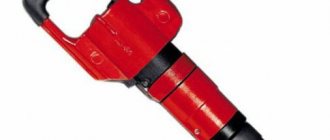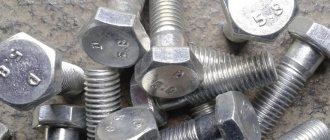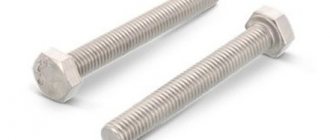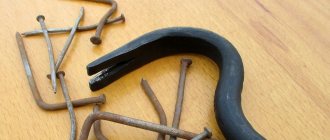Articles
All photos from the article
In the home corners of a craftsman, most often only those electric tools are found whose range of applications approaches the mark of versatility.
This tool can grind.
This set can be easily reduced to 5 tools:
- Screwdriver;
- Bulgarian;
- Drill or hammer drill;
- Jigsaw
- A homemade mini circular saw for wood, and even that is not necessary.
All this is enough to carry out basic construction and repair work in a house or apartment. The presence of another tool is not necessary, although cases vary. That's when the eternal questions arise.
Some general information
An angle grinder or angle grinder, better known as an angle grinder, is a universal tool for various tasks:
- rough and fine sanding of wood;
- polishing, cleaning surfaces;
- removing bark, cutting branches from trees;
- sawing boards, chipboard, fiberboard, logs.
Such a wealth of tasks that can be solved makes the grinder the most versatile of all grinding machines. It is called angular due to the fact that the axes of the engine and the working circle are located at right angles to each other, in contrast to machines with a direct arrangement.
At the same time, an angle grinder is a tool specifically for periodic work around the house, minor repairs, and replacement of floor coverings. Attachment disks allow you to cut, sharpen, and polish workpieces. For regular work with wood, stream production for the purpose of earning money, you need a professional category tool.
Structure of an angle grinder
Manual way to sand a wooden surface
In the absence of a special tool, grinding can be done by manually processing the surface. This requires only a special block, as well as sandpaper with a grain size suitable for the specific type of work. Among the features of this process, we note the following points:
- The design has a special fastening element, which ensures the fastening of sandpaper.
- Coarse sandpaper can be used to sand a product with a high roughness. This is due to the fact that small ones wear out quickly. Grinding should be carried out in several stages, due to which a high level of smoothness is achieved.
- Manual grinding is often carried out when the product has a small area.
- When using bars of various sizes and shapes, complex products can be processed.
Read also: Violation of the production process
Manual grater for sanding wood
The manual method has been used for quite a long period. It is worth considering that achieving the required result is possible only if you have extensive work experience.
Types of cutting attachments for grinding wood angle grinders
Sanding boards with a grinder is one of the main tasks for which this tool is used. Special care is required from the craftsman, since wood is a fibrous material. To avoid the appearance of burrs, chips, and large scattering of chips, you need not only reliable fixation of the workpiece, but also special attachments: standard diamond cutters will not work. The work is performed with special grinding attachments.
For rough processing
Primary processing of wooden products is carried out using grinding discs of the following types:
- Roughing. This type of nozzle is used to remove old, hard-to-clean coating from the workpiece: varnish, dried paint. There are steel wire bristles across the entire area of the disc.
- Cord brushes. After the initial rough processing, the wooden surface is smoothed and leveled with cord brushes made of wire or rigid wire bundles of a horizontal or perpendicular arrangement.
- End Designed for cleaning the ends and edges of wooden boards, aligning miter cuts.
For grinding and polishing
Following rough initial processing, the wood is sanded and polished. The following types of disks are used for this:
- Petalaceae. The most famous and widespread type of attachments for angle grinders. The disc looks like a flower with long thin petals, the role of which is played by an abrasive material. The petal attachments wear out slowly. As you sand, it is recommended to gradually replace coarse-grained nozzles with fine-grained ones.
- Adhesive abrasive wheels. They are glued with Velcro onto the round metal attachment of the grinder. The kit comes standard with several circles – usually five. A worn disc can be easily removed from the attachment and replaced with a new one. The abrasive wheel contains sandpaper, felt, sponge, and high-density fabrics.
Cutting discs
To cut wood with a grinder, cutting circles are used. They are made of tungsten carbide, a high-strength powder material, since cutting work requires increased durability. Do not use a cutting wheel for stone, metal or ceramics on wood. The consequences can be disastrous: the wooden workpiece will be damaged, the disk will break, the grinder itself will burn out.
In addition to the diameter and cutting depth, the key classification parameter for cutting wheels is the shape of the teeth:
- straight – for soft wood;
- variable beveled - for all types of wood;
- trapezoidal - for fiberboard, medium-density chipboard, laminate.
If you look at a cutting disc, the notches along the circumference or slot immediately catch your eye.
Cut-off with different teeth and slots
This is a special design solution that prevents overheating of the material. For example, when working with stone or metal, the water cooling method is used, but this is not applicable for wood. Therefore, the manufacturers did everything in advance to minimize the risk of the wheel overheating.
Important! On all modern angle grinders the standard shaft diameter is 22.2 mm; on older models this size may be smaller or larger. A cutting wheel can be placed on a shaft of a smaller diameter using an adapter attachment, but it will not be possible to install a disk of this type on a large shaft.
Materials from which nozzles are made
All grinding attachments have one property in common: impact on softer material with the ability to scrape it off. But different jobs may require different rigidities. The following materials are used for nozzles:
- sandpaper;
- fabric materials or soft fibers;
- stones.
Sandpaper is used in the vast majority of work, as it allows you to process the surface with different forces, depending on the grain size of the material. Cloth or soft fibers are used for final polishing. Stones can be useful if it is necessary to make major changes to the shape of a part.
Technique for sanding wood with an angle grinder
When starting to process wood with an angle grinder, you need to keep two main points in mind:
- You should not process the surface of the workpiece with the entire area of the grinding disc, as marks from the wheel may remain. Only the upper part of the nozzle is used.
- During sanding, the grinder is guided along the grain of the wood: this way there will be no marks left. At the same time, it is important to find a support point so that your hands do not get tired.
The general process of sanding wooden surfaces with a grinder is divided into several separate stages:
- Preliminary preparation of the coating. All remnants of the previous paint and varnish are removed with rough grinding wheels. It is also worth making sure that there are no nails or screws sticking out from the floor or wall, if they are the ones being sanded. Protruding fasteners must be removed, and if this is not possible, immersed as deeply as possible into the surface so that they do not in any way affect the operation of the angle grinder.
Pre-processing of the part
When sanding floors, there are two more mandatory rules. Even if only a small area of the floor is being processed with a grinder, it is recommended to remove all furniture from the room and cover doorways and windows with thick film or oilcloth to protect from dust. Any cracks or gaps in the working surface are unacceptable. Only after filling the holes with a special wood putty and drying can you start sanding.
- Primary grinding. It is carried out with coarse-grained discs in the range P20-P40. If you don’t have such a circle at hand, you can cut out and glue a piece of sandpaper to the angle grinder attachment. Perform 2-3 passes with a grinder over the entire working area. At this stage, it is especially important to control the force of pressing on the nozzle: weakly - the processing will not be good enough, too much - a large load on the angle grinder motor.
Primary grinding
- Fine stripping. Replaceable petal attachments of varying degrees of granularity are used - from P60 to P80. The master makes 1-2 full passes over the wooden workpiece being processed.
Fine grinding is done using a flap attachment.
- Putty gaps. After sanding, all gaps must be eliminated. First, they are passed over with a nozzle with a minimum grain size, and then the treated areas are puttied. Two points are worth highlighting here. In places that are difficult to access, you will have to process them manually. Plus, during grinding a lot of dust is generated, and we must not forget to remove it in a timely manner.
Wood putty
Final grinding steps
Final polishing of the wooden surface is carried out using sanding discs made of felt and soft cloth marked P100 or P120. A wax-based polishing paste is first applied to the wood, and then 1-2 passes are made along the surface area to be treated. After polishing, all that remains is to prime the surface. By priming, not only the remaining small roughnesses are smoothed out, but the service life of the wood is also extended. Oil paints or alkyd enamels are best suited as a primer for wood.
The procedure is done manually with brushes in the following sequence:
- Dip the brush well in the primer, apply to the workpiece, spread over the entire area.
- Wait until the paint is completely absorbed and the wood dries - at least 2 days.
- Apply 2 more layers of primer, and the second can be coated only after the first has dried.
- After this, the priming will be completed. You can apply a top coat of varnish to the wood.
Priming wood
How to clean after use?
During operation, the sandpaper becomes clogged with dust, shavings, resin and loses its working properties. To extend its service life, it can be cleaned. There are special cleaning bars for machine belts and discs. They are usually made of rubber. For regular sheet sandpaper, hard brushes are available. You can also clean the abrasive using improvised means. Suitable for this:
- a hard brush with plastic bristles for cleaning household surfaces and clothes;
- rubber (a piece of an old hose, tires, the sole of sneakers);
- rubber;
- hard ribbed plastic.
But sharp metal objects cannot be used for cleaning, as they will damage the connecting compound and the abrasive grains will simply crumble.
The cleaning technology is very simple:
- the sandpaper is thoroughly shaken off;
- lightly moisten the skin with water;
- wipe gently.
A good skin can withstand several cleaning cycles.
The nuances of choosing a disc for an angle grinder for sanding wood
Any circle for an angle grinder is marked, which contains all the necessary information:
- diameter;
- thickness;
- seat size;
- permissible speed;
- recommended material for processing;
- best before date.
Marking of grinding wheels
The minimum standard disc diameter is 11.5 cm, but for sanding wooden boards with a grinder it is recommended to install attachments at 12.5 cm. Large diameters - over 15 cm - are not very suitable for processing wood, and create an increased risk of injury.
It is a bad idea to polish a wooden piece with a wheel of a larger diameter than intended by the angle grinder manufacturer. This option will not provide a single advantage, but there are plenty of potential problems:
- Causing injury;
- disk failure;
- lack of standard power of the grinder for working with a circle of the wrong size;
- the need to remove the protective cover under the nozzle.
The abrasiveness of the wheel depends on the type of work planned. For rough, rough processing, discs with coarse grains are used, but the finer the grinding should be achieved, the smaller the grain size of the abrasive selected.
Advice! An interesting option is a circle with replaceable adhesive attachments of different abrasiveness. True, the quality of the products is not the highest, which is why they wear out quickly.
About grinding pads and making them yourself
The simplest tool can be called sanding pads. They can be used to work with a wide variety of workpieces. Among the features of common pads, the following points can be highlighted:
- Most versions consist of three main parts: the shoe and the locking mechanism and the handle. The body is used as a base; the fixing element does not allow the sandpaper to move during operation.
- Branded pads are made in a variety of shapes and types. In most cases, plastic is used in the manufacture of the case, which is characterized by low weight, but also low strength.
Homemade sanding block
If desired, you can make such a tool yourself. For this, an ordinary wooden block is used, to which the skin is attached using nails or screws. The handle can be attached to a block to simplify the grinding and polishing process.
When making a homemade structure, it is worth considering what size the workpiece will be processed. If the size is too large, the working area should be larger, but problems may arise with selecting the most suitable skin.
Tips and tricks for sanding wood using an angle grinder
Some useful tips about sanding wood with a grinder:
- It is important to choose the right angle grinder for this job. It is recommended to use a tool with a speed of up to 6 thousand per minute or a speed controller. At high speeds, grinding discs are more susceptible to clogging and, accordingly, wear out more quickly.
- To avoid the wire getting in the way while working, it is better to use a cordless angle grinder.
- Sanding wood involves a lot of dust and shavings, so angle grinder models with motor protection are preferable. Another option is to attach a dust collector to the grinder.
- Eye and respiratory protection is necessary when operating an angle grinder. There should be mittens on your hands.
- The protective cover of the grinding disc must not be removed during operation. It also has a protective function: if the circle breaks into small fragments, the casing will protect the master from falling fragments.
- If a cutting wheel is installed on the angle grinder, the wooden surface must be polished strictly at a right angle. Otherwise, the grinding will turn out uneven, and the angle grinder itself may jam in the workpiece.
- It is better to never use grinding discs that do not fit the grinder in at least one of the dimensional parameters.
- It is not allowed to use a wheel with even minor defects.
- Circles for circular saws and other third-party attachments should not be installed on an angle grinder - there is no need to reinvent the wheel, standard grinding and cutting discs are sufficient. In addition, this is impractical: circular saw discs are designed for a much lower speed, which means that the grinding will be of poor quality, and the disc itself may break.
Cleaning wood with a grinder is a simple procedure, but the result will meet expectations only if all stages are performed correctly: surface preparation, primary and fine sanding, filling gaps, polishing, priming. You should only use abrasive wheels of the appropriate size and grit.
Surface belt sanders
The most productive are surface belt grinders. They use abrasive sandpaper glued into a tape (Fig. 11). All such tools are equipped with a small bag for collecting wood dust. During operation, more than 80% of the dust generated accumulates inside this bag.
Rice. 11 Belt sander
Manufacturers recommend intermittent operation: grind for 5...7 minutes, and then give the tool a break. Even the presence of a fan inside does not effectively cool the device. After a three-minute break, you can continue working.
Manufacturers supply the tool with auxiliary devices with which you can fix the grinding machine in space (Fig. 12).
Rice. 12 Installing the belt sander on the table
Craftsmen make special stands for belt sanders, with the help of which the scope of application of the devices is significantly expanded (Fig. 13). With the help of such options, it becomes possible to polish the ends of products with high quality. The underframe itself can be fixed at any angle, which will allow for high-quality processing.
Rice. 13 Stand for belt sanderThe industry produces stationary belt sanders (Fig. 14). They are called grinders. With the help of such devices, it becomes possible to grind products by resting them on a special support table. A grinder is similar in many ways to a belt sander. In fact, it is a stationary machine where you can carry out quite complex wood finishing operations.
Rice. 14 Grinder
How to choose sandpaper for working with wood?
When choosing a consumable, quite a few different points can be taken into account. Let's take an example:
- Grain size.
- Type of abrasive used.
- For what purposes is the consumable material intended?
As a rule, the marking indicates the abrasive grain size according to ISO. When selecting, special tables can be used. Wood is processed with fine-grained sandpaper for a small number of defects and before polishing. Dry or wet sanding
Dry grinding is most often carried out. This technology is easy to implement and consumables are cheap. There is also wet sanding, which involves the use of special paper.
Wet grinding and polishing involves supplying water to the processing area. Due to this, the wood softens. Today, such technology is used extremely rarely.
When is the best time to sand?
There are a lot of possible answers to this question. Traditionally, the frame is sanded after at least the main shrinkage has passed. During this time, the log dries out and it becomes easier to work with. It is extremely difficult to remove even a thin layer from raw wood. If you need to level it, it will take a lot of time, money for disks and effort.
On the other hand, if you have a frame made of dried timber and logs, then you can sand and process it right away. In this case, having placed the frame under the roof, it is sanded, immediately treated with impregnations and left to shrink in this form. This is done infrequently, although no one forbids it. They usually act according to the usual scheme.
The log house is polished after it has settled











